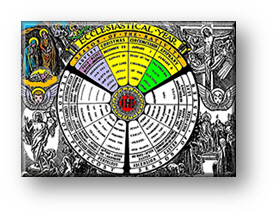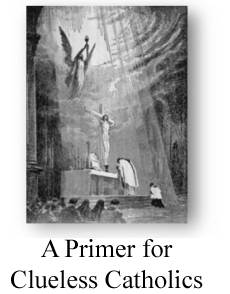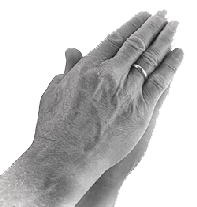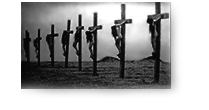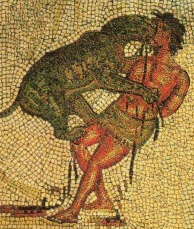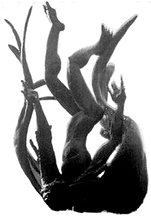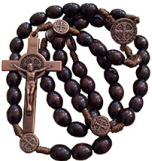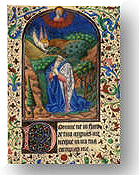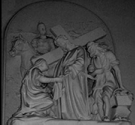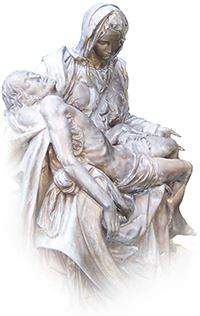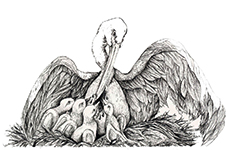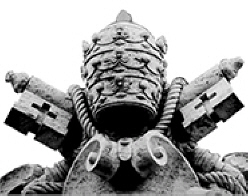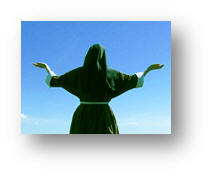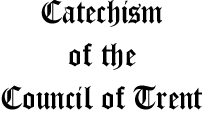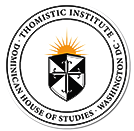|
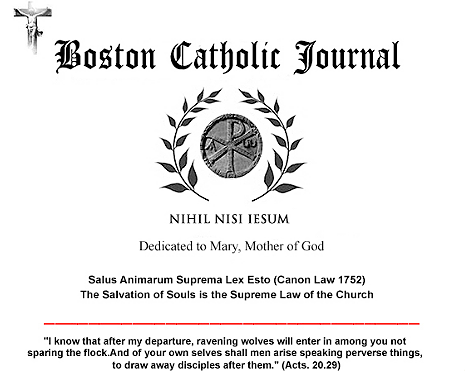
The Doctrine and Concept
of
the Most Holy Trinity
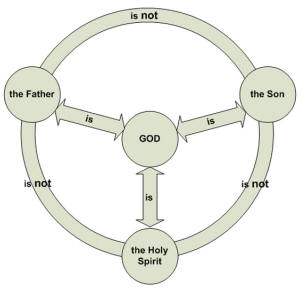
Some doctrines perplex
us more than others. Offhand,
we could enumerate the following:
-
The Incarnation
(the infinite God is born of a woman, the Virgin Mary, and takes
upon Himself our finite humanity)
-
The Virgin Birth
(Mary remained a virgin before, during, and after the conception
and birth of her Son, Jesus)
-
The Immaculate
Conception (Mary's being conceived in her own mother's womb
without the stain of Original Sin)
-
Creation ex
nihilo (the creation by God of something out of nothing)
We assent to these dogmas (dogma,
just by the way, is not a four letter word — but rather, a formally
revealed truth) although they remain mysteries, that is to say, they
exceed the capacity of reason, while not conflicting with it. No
logical contradiction can be adduced to discredit them; they simply
lie beyond the province of our natural experience and the limitations
inherent in reason (and reason has limitations: we need only
ponder the concepts of infinity, infinite divisibility, and eternity
to name a few).
Among these dogmas, or revealed truths, however, none quite so perplexes
us as the notion of the Most Holy Trinity. That in and of itself it
remains a profound mystery is profoundly true. However, because it pertains
to the most central aspect of our faith as Catholics and Christians,
inasmuch as it pertains to the Person and nature of God, we attempt
to apprehend it in some measure, for only in knowing something, in knowing
of its nature, can we begin to love it.
We do not love what we do not know, and
our knowing defectively or insufficiently results in our loving defectively
or deficiently.
We Wish to Know God
We wish to know Him well.
In fact, we are convinced — and rightly so — that the more we know about
God, the more we will find to love in Him, and the more we love, the
greater our own felicity ... especially when that love is requited.
Too often, in the minds of Christians, God is reduced to the Father
only: conceived as an elderly, avuncular figure with a great white beard
Who is rather stern and quite distant; one Who is really very little
involved in the trivial affairs of men, and so sent His Son instead,
and the Son, of course, is less than the Father. What is more, the Son
is more compassionate than this remote and rather irascible figure that
more resembles Aristotle’s Unmoved Mover, than a Father. We like
Jesus — although we fear His Father. In fact, for so many, Christian
and pagan alike, Jesus was merely a man, perhaps a wise man, maybe even
a prophet of sorts — but not more. Well ... maybe ... but we
are not quite sure how. The Holy Spirit? This faceless Spirit, whatever
its nature, clearly cannot be that of a person, although
He nevertheless figures largely in this mysterious narrative. Quite
a conundrum.
Ask quite nearly every adult Catholic who has, over the past 40 years,
suffered from the inexcusable negligence in Catechism, or CCD (Confraternity
of Christian Doctrine), as we call it here in America — a negligence
that lays at the feet of the Bishops who, opting for a more visible
correctitude in matters social and political, have defaulted on their
primary responsibility as Teachers of the Faith in
their respective dioceses — and the answer is the same, although the
inflections vary: “I really don't know”, or, “it is terribly unclear
to me.”
Many — perhaps most — will reply that there are three gods, or that
one is superior to the other, or existed prior to the other, or in fact,
that only one is God and the others are something of the nature of demiurges
or lesser gods, possessed of remarkable abilities, to be sure, but rather
like us in every other way.
St. Augustine literally wrote volumes on the subject (De Trinitate),
as did St. Thomas Aquinas and many, many, other great and learned Saints.
Even the the most modest compendium using the utmost concision will,
very likely, avail you little in the way of understanding the most fundamental
features of this doctrine, this profound mystery — and in failing
to yield understanding in whatever measure, consequently failing to
motivate love for that which is not understood.
The Mystery of God
A “Mystery”
— many fail to understand —is not something contradictory to
logic and reason, but rather exceeds the limitations of human
reasoning and formal logic, much in the way that “seeing” incommensurably
exceeds any possible description of “what is seen”. What I mean is this:
being “color-blind” (actually color-deficient), I have never seen the
color “Purple.” I see “Purple” as indistinguishable from “Blue” —
but it is not Blue. It is this mysterious visual experience
called (by others) Purple. No matter how many carefully crafted and
descriptive words you may use, no matter how many analogies you may
invoke, none of them will yield to me the experience of the color
Purple. It is beyond my ken because it beyond my experience, and
all human discourse presumes shared experiences to their intelligibility.
Does purple then not exist because I cannot understand it, still less
perceive it, even while others can? In a word, no.
Perhaps, then, as it is said, “a picture (in this case a diagram) is
worth a thousand words”. So, for the sake of those who should
be teaching and do not, or are teaching and know little of what
they teach — but most of all for the children, we present you a picture
— in the shameful absence of words.
Our motivation is simple: if you do not know God, how can you
love Him?
Oh, yes ...God does not “look like” the conceptual drawing ...
and we truly fear that we are compelled to say that ...
Editor
Boston Catholic Journal
 Printable PDF Version
Printable PDF Version
Comments? Write us:
editor@boston-catholic-journal.com

Totally Faithful to the Sacred
Deposit of Faith entrusted to the Holy See in Rome
“Scio
opera tua ... quia modicum habes virtutem, et servasti verbum
Meum, nec non negasti Nomen Meum”
“I
know your works ... that you have but little power, and
yet you have kept My word, and have not denied My Name.”
(Apocalypse
3.8)
Copyright © 2004 - 2025 Boston Catholic
Journal. All rights reserved. Unless otherwise stated, permission
is granted by the Boston Catholic Journal for the copying
and distribution of the articles and audio files under the
following conditions: No additions, deletions, or
changes are to be made to the text or audio files in any
way, and the copies may not be sold for a profit. In the
reproduction, in any format of any image, graphic, text,
or audio file, attribution must be given to the Boston Catholic
Journal.
|
|

